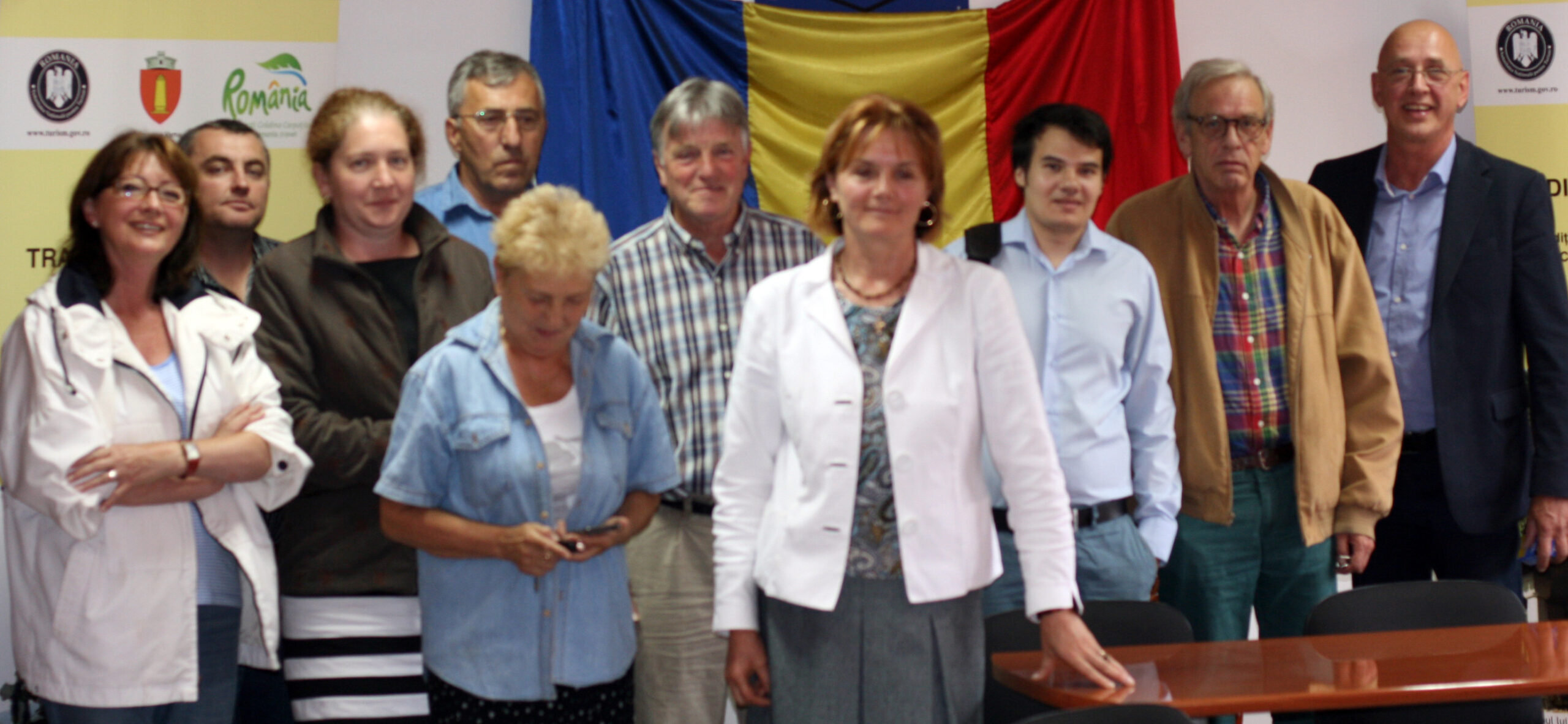Start of the pilot project Vatra Moldovitei, Romania
July was an eventful month for the team of Water4life. Together with SMHO foundation we began our mission in Bucovina, a small region in the Northern side of Romania. Here we made the first steps in setting the pilot project, which includes several local communities from the area: Vatra Moldovitei, Vama, Campulung Moldovenesc, Moldovita, Frumosu, Paltinu, Sadova, Prisaca, Pojorata, Marginea. Our main focus at this stage of the project was understanding the local needs and assessing the current situation, therefore we organized meetings with local doctors, mayors, school personnel, local families and we checked the conditions of drinking water available: the sources, quality, concentration of nitrates/nitrites, bacteria, heavy metals etc.
Vatra Moldovitei
We started our activities in Vatra Moldovitei, a community of 4633 inhabitants, where we visited one of the schools and a local doctor.
We found out that the water source of the school is a 7-8 meters deep well and that the water pump used has small capacity while having to cover the needs of the 200 students. We took a sample from their tap water to test it. Together with SMHO foundation we donated a test-model membrane filter which can be linked to their toilets and 3 sinks to provide children with safe drinkable water. If everything works well with adjusting the connections, later on we will bring them a more suitable filter based on the results of water analysis and scale up for the entire school. The school representatives were open for future collaboration through training sessions for children on sanitation and hygiene matters and offered part of their library to be used for promoting the initiative.
From the local doctor we learned that there are many cases of children infected with Giardia, a bacteria formed due to contaminated water. Anemia, high deficiency of calcium and high concentration of nitrate/nitrites are also common among children.
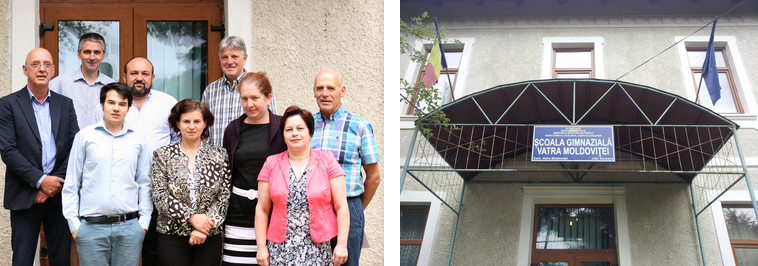
There is no possibility for testing 400-500 children of Giardia since the tests are expensive and need a special equipment. Therefore, the doctor is willing to give us more input when she finds at her patients the symptoms correlated with lack of safe drinking water.
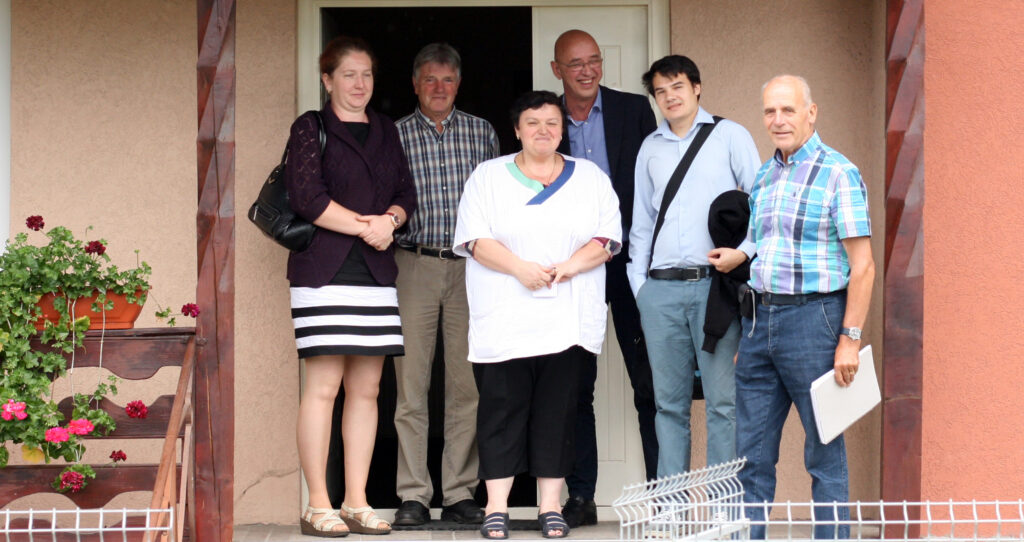
Vama
Our next stop was Vama, a community of 6.100 inhabitants.
From the local representatives met we learned that out of a population of 6100, only 1900-2000 are linked to a water pipe system and the rest of them use a well or spring water. The doctor has between 5000-6000 patients and so far there were no signs that the water would be contaminated. However, she still recommends them to buy bottled water as the one from wells doesn’t seem very safe to her. The wells are not checked though and people cannot afford the cost of a standard micro-biological test (150 lei, meaning approx. 35 euros).
Vama has 7 primary schools for children of 3-15. We learned that none of these is linked to the water pipe system and that they use water wells instead. The only observation they made was that the water is hard.
According to the mayor they had a functional ozone station in the past but its activity was stopped in 2007. Now they are applying for subsidies from European Union to repair the station.
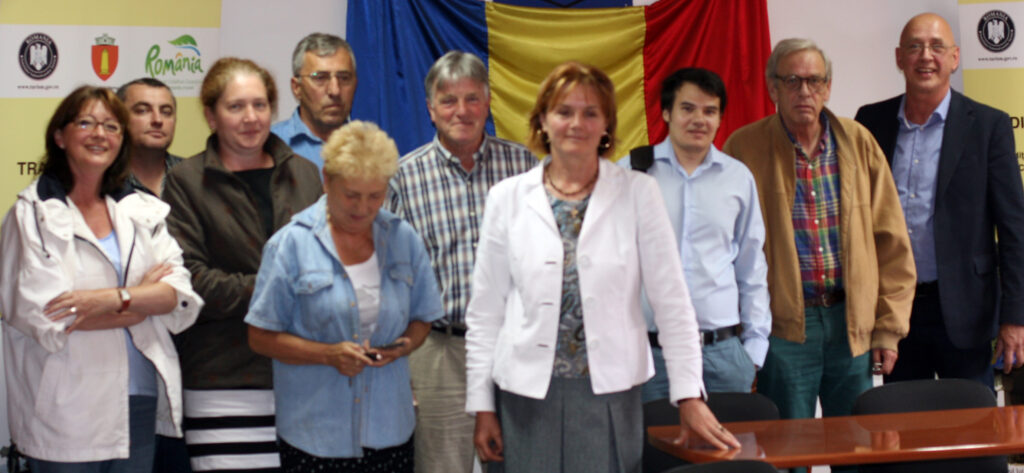
Paltinu
Our visit in Paltinu confirmed our expectations. We shortly met here 2 local doctors, who also believe the local source of water is not safe. They informed us that most of the patients who come at the hospital have problems from bad sanitation and lack of safe drinking water. Most problems are worms, Ecoli and Giardia. Since they would like to take action for improving people’s health, we proposed them to help us with data from patients having certain symptoms. The doctor suggested to choose a sample of 20 families who confront themselves with unsafe water related issues and to do periodical checks to test whether using water4life system improves their health.
Campulung Moldovenesc
Campulung Moldovenesc, a town of 20.000 inhabitants, was the next stop in our journey.
The Water Treatment station is using 11 wells and it’s pumping the water into 2 big water tanks of 1500m3. For treatment they use filters and chlorination method: 0.5mg/L. This method is known to have a negative impact on human health however they need to follow the law enforced by the Ministry of Health (458/2002).
The patients and the personnel at the local hospital don’t use tap water to drink (here the water comes from spring with falling). The personnel buys water from a special vendor for their own use, at the cost of 200 euro per month.
The patients need to provide their own drinking water purchased or brought from home from their personal source: well, spring or piped water. And we already know that the wells and spring water sources are not checked.
The principal of one of the schools is willing to support us with sanitation programs and safe drinkable water training for children.
Moldovita
We visited also Moldovita, a community of 5000 inhabitants, where we met representatives of the town hall, of the school and a local association.
We found out that there are around 1300 wells and springs used as water sources. None of these sources seems absolutely safe – spring water has high amount of sand while wells water is at high risk of being infected due to the decanters placed nearby.
The school principal was very enthusiastic about organizing a sanitation program and hygiene training for children as well as a presentation of Water4life equipment.
We continued our visits in Frumosu, Sadova, Prisaca, Pojorata, Marginea. Similarly to our previous stops, the water sources used here are wells and springs. There are little or no checks of the chemical composition and some families prefer to buy bottled water over using the less safe sources.
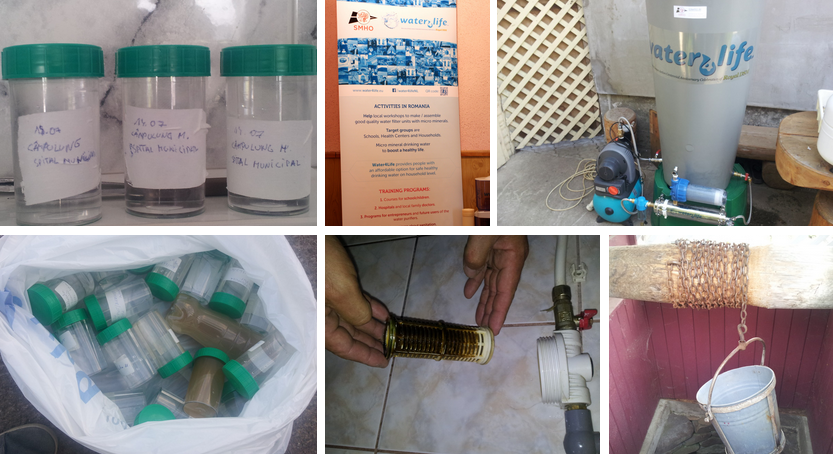
Bucharest 22-25 July – SaniMed Research Institute
We visited SaniMed, a Research Institute made with European Funds in Calugareni (near Bucharest). The institute is a nucleus for development projects such as manufacturing of collagen.
They were interested in our ideas for a future Water4life project and decided to join forces in our mission to improve the quality of water and the quality of life implicitly. Since further research and investments are needed for this project, we will apply together for European Funds financing under the project name FunctionalWater.

